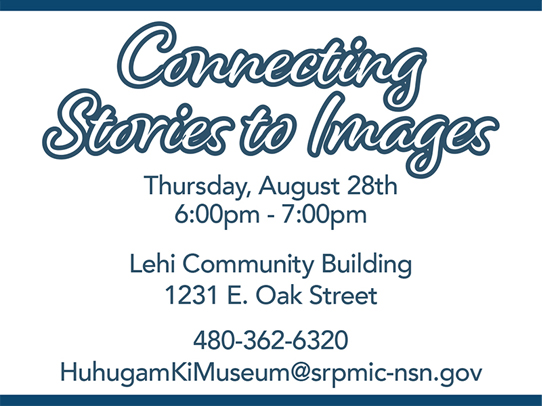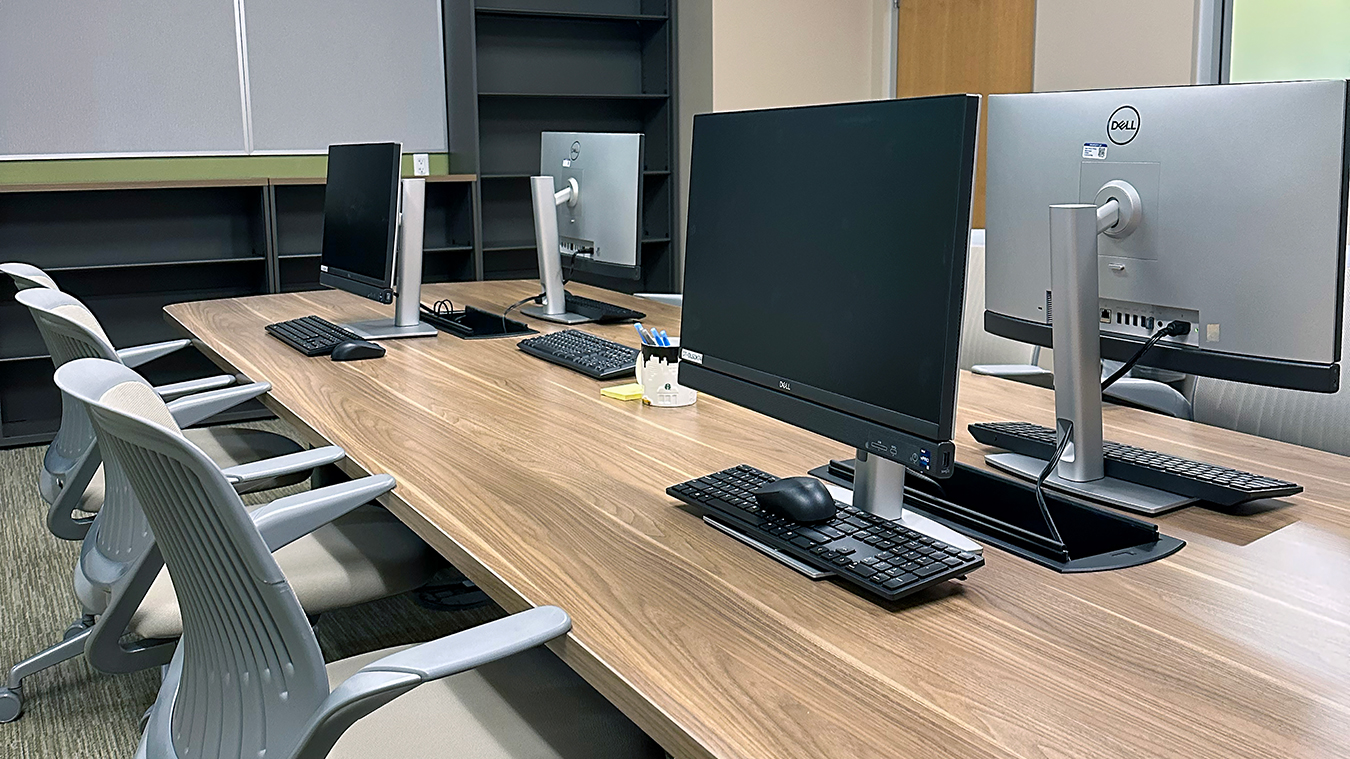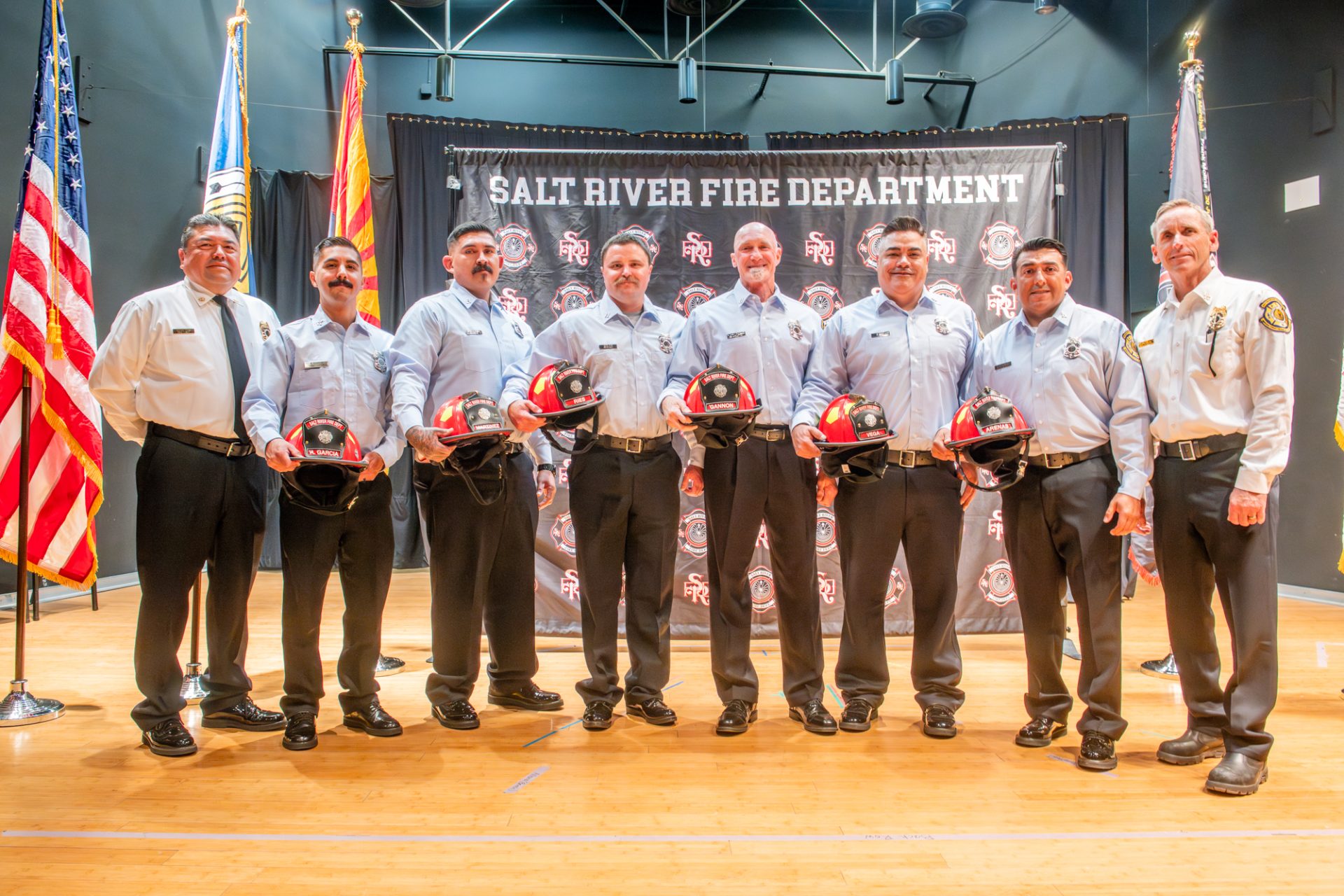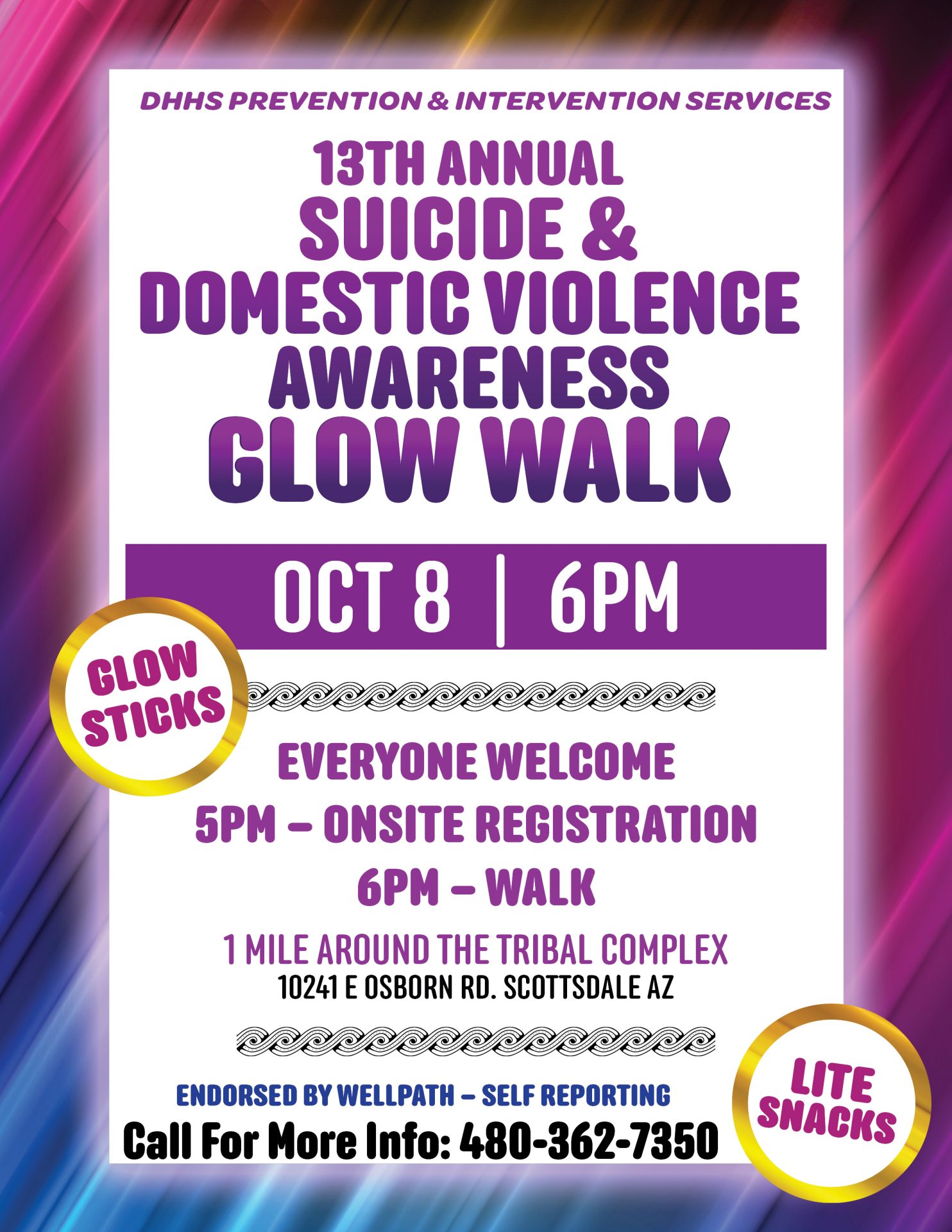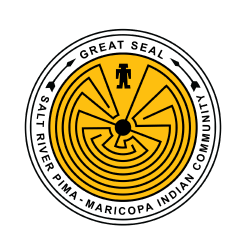VIEWS: 1156
August 25, 2025Archiving and digitizing the Salt River Pima-Maricopa Indian Community
Learn the inner workings of how the SRPMIC is maintaining a digital and ongoing archive of four-plus decades worth of photos and articles for future generations to come.
“Since 1982, the Community Relations Office has been documenting the Salt River Pima-Maricopa Indian Community,” began Janet Johnson. “We documented through photo and video.”
The collection is her life’s work. She and former SRPMIC President Ivan Makil were the first two employees to work in the Community Relations Office (CRO), believed to be the first-ever public relations office created in Indian Country.
“In 1984, the newspaper came under Community Relations,” Johnson added. “Since that time, the office was documenting the entire Community, versus the newspaper [staff] were taking pictures solely for the newspaper.”
Johnson recalled that during the 1990s, Dodie Manuel joined O’odham Action News as managing editor. The duo began creating a plan to archive the content for future generations. “During that time, we decided to put both photograph collections together,” said Johnson.
This plan ensured CRO still documented the Community while O’odham Action News captured the event coverage for its publication. “Sometimes, we both would be at the same event, but the CRO staff would always take additional photos for documentation,” Johnson recalled.
Although both have since retired, Johnson still dedicates her time to the Cultural Resources Department by helping with archive work.
According to Johnson, photography for the newspaper and documenting the Community are two different processes. Due to the number of stories published in an edition of O’odham Action News, standard event coverage could potentially only have room for one or two printed photos in its final publication.
Documenting the Community generally involves taking multiple photos, compared to standard newspaper coverage. This involves capturing close-ups of individuals, behind-the-scenes footage, event’s landscape and more.
Many of the photographs in the CRO collection are black and white because color photographs contain different ink components that can separate and erode over time; that is not the case with monochrome photos.
In addition to the photographs taken by staff, Johnson recalled how CRO received items from the members, departments and staff.
“In the 1980s, one of the teachers from the Day School had passed on, so her son had donated her photo collection to us,” Johnson said.
“Essentially, we were the catch-all,” admits Johnson. “The people knew we were documenting the Community and also had the newspaper, so people would just give us their photos. We have some photos from the late 1960s, 70s, 80s, and all the way up until 2000s.”
As the collection continued to grow, the need for a proper plan to store and archive the photos became not only a necessity but a requirement.
Before Johnson’s tenure with CRO ended, she met with Kelly Washington, Cultural Resources director. She updated him on the vision she had for the collection, which included allowing membership to have access to the items. The two agreed on a plan and would later ask Daniel Martinez, CRO Multimedia manager, to find a vendor that could digitize copies of the entire collection.
In September of 2024, the digital items were officially turned over to the SRPMIC Cultural Repository and was officially named the Community Relations Office Digital Photograph Collection. The collection has more than 4,000 folders and contains over 102,000 images.
The Historical Importance of OAN
“In 2008, in conjunction with the Huhugam Ki: Museum, I met with the late Lee Thomas who was with the tribal library, and also Janet,” began Gary Owens, Huhugam Ki: Museum manager.
He continued, “They were going to turn over their issues of O’odham Action News to us, the tribal library and keep a copy for themselves.”
“We started making a catalog of different issues from the 1980s, 90s, and 2000s. This was in tandem with the library,” Owens said.
During those early years, museum staff would grab a copy of O’odham Action News and manually type headlines of the story from within the publication.
“We did it all in an Excel spreadsheet, we started this in 2012 with the staff,” Owens recalled. “[The software] we used was called FileMaker Pro.”
Staff assigned to assist with cataloging the collection would then work backwards from the current issue and repeat the process for older editions of O’odham Action News, dating back to 2004.
Later, additional staff would repeat the process of cataloging old newspaper editions, transcribing every edition from 2008 to 2016. “We did it in increments. We wanted the documentation of all the articles and photos that were in there,” explained Owens.
During that time, as the staff worked diligently and as a unified team, Owens noticed a trend within the older editions.
“We started finding historical references to the growth of the education department, the beginning of the language program, housing developments, water rights, the high school groundbreaking, Two Waters being built, the gaming compacts, and more. This became an important source of historical documentation,” Owens said.
Utilizing the “3-2-1 method” of storage and archiving, the team maintains and operates a digitized collection of old OAN editions. “We have three copies, on at least two different devices, one of them being in a different geographical location,” explained Lessie Dingler, SRPMIC museum digital archivist. She said this archival method is working towards federal guidelines.
Within the archive, staff catalog every publication and folder for the respective decade. “[An example of this] is we have a synopsis of the year 1999 in photos within this archive,” recalled Johnson.
“Each file contains a description. We identify who is in the photo, when it was taken, and more. If we don’t know when a photo was taken, we highlight it. We include anything we know in the descriptions,” Johnson said.
The metadata is created within spreadsheets, enabling staff to collaborate as a team during the archival process.
The repository, in partnership with Community Employment, developed a pilot program of support clerks to assist the team due to the massive scale of the archival project. Three clerks assist the repository staff and do not receive assignments to work in other departments. “It’s a spin-off from the Day Work program, they’re placed into the repository, under the direction of the museum, for six months,” Johnson said.
The clerks digitized old editions of O’odham Action News from the mid 1980s to 2005. “I digitized the 1970s and 80s, and they took it from there,” Dingler recalled.
Owens, Johnson and Dingler provided their kudos to the first group of four clerks, as their hard work and dedication to the project were invaluable. “We told them, ‘You don’t have to get to the finish line, we’ll do that. You’re going to help us get there,’” explained Owens. “This is the second group of support clerks we have worked with. The first team, Ms. Marcias, Mr. Ruiz, Mr. Donahue and Mr. Manuel laid the groundwork for the current team and this new group have hit the ground running.”
Dingler also thanked the SRPMIC Information Technology Department for their assistance in setting up the equipment while providing the repository team with terabytes of data space for the images to be saved in high-quality file formats, such as TIFF.
Thanking Those Who Came Before
With all the different functions and processes needed to conduct digital archiving, Owens made sure to acknowledge those from the 1950s, 60s and 70s who paved the way for the processes and systems the Community benefits from.
“People see Two Waters and think that’s the end result. But it continues with the work being done for the Community by the current department staff and administration. In the past, there was a lot of work put in [at the time] by Community members who were managers, directors and supervisors,” he said. “Tribal council members, present and especially the past, played a determined role in building this Community.”
Owens continued, “We need to make sure the people know the people who helped us get here. Bob Scabby, Robin Enos, Adeline Tracy, Gene Andreas, so many, these are the people. They always wanted something good for Salt River because they felt the Community deserved the best for themselves. That’s how it was in the 1960s when they rewrote the tribal constitution. It laid the plans for future growth and development.”
He enjoyed seeing old newspaper editions that featured the first graduating class of Community firefighters, veterans who served, and many more items listed in previous editions. “Those names were put there for a reason,” Owens said. “They were contributing to the Community.”
The Big Picture
“Everything boils down to allowing the people to access this,” Dingler said.
The end goal of these projects is to finalize a research center where Community members can access files and conduct their research within the repository.
Dingler added, “We can put as much description and time into these projects, but if we have no way for Community members to have it available to them, then it’s not really useful for its intended purpose.”
She continued, revealing plans for the Community to create and maintain an intranet-based website containing digitized images and information transcribed by the team.
An intranet is a private network that only users within a specific organization can access. The Internet, in contrast, is a public network that anyone can access.
The team has been conducting additional outreach by appearing in the Community and providing updates and examples to the membership regarding the status of these archival projects.
Recently, the team attended a Senior Breakfast and presented updates to attendees as well as a montage slideshow of the photos in the collection.
The Future
“This collection is owned by the tribe,” said Johnson proudly. “It’s the largest that the repository has received to date. We want to share it with the Community and let them know that we have these items.”
To help educate the Community about the digital archiving process, the team hosted presentations earlier this year explaining the steps, as well as showcasing old editions of O’odham Action News.
Owens added his own insight. “When you get to a certain point, you need to figure out how you got there. It’s always been the struggles that have helped this Community, to get the enthusiasm to go out and make sure that they are secure by building a solid infrastructure. This is where we take care of ourselves. But importantly, that the grandchildren and the future generations will be secure.”
“That’s what the elderly did in the 1960s. They picked these people and said, ‘You need to lead us.’ Because of that, we have a tribal government that other tribes come to see and gather information about how we’ve achieved this. It was the Community members, with help from others, that did this, they worked together. People like Mrs. Hilda Manuel, Mrs. Margie Brown, Mr. Francis Makil, Mr. Billman Hayes Sr., Mrs. Christine Owens, Mr. Royal Schurz, Mr. Herschal Andrews, Mr. Johnson Enos, Mrs. Myra Rice, Mr. Filmore Carlos, Mr. Paul Smith. This is just a small list of people that recognized this. They and many more pushed for a good life for the people. That is history and that’s what our team here in the repository is trying to do, get the history of Salt River out to the Community.”
